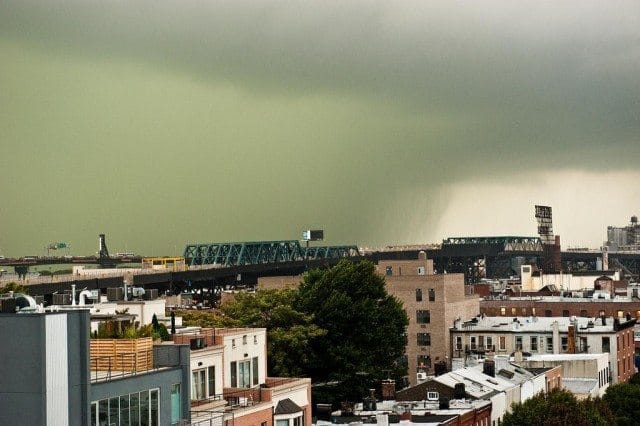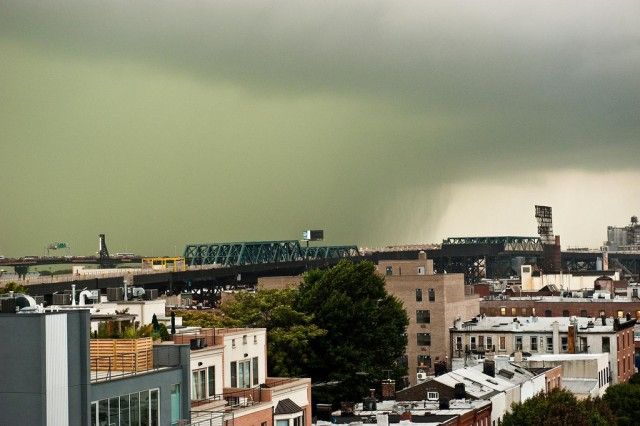Storm Preparedness: Tornado Facts And Safety Tips


Yesterday’s tragic tornado in Oklahoma is a violent reminder that tornado season is upon us. Although they’re not as common here in the Northeast, the last few years have certainly driven home the fact that tornadoes do occur in New York City, and it’s important to understand what safety measures to take if a storm hits our community.
First of all, make sure you know the difference between a Tornado Watch and a Tornado Warning.
If a Tornado Watch is issued for Kings County by the National Weather Service, the NYC Office of Emergency Management explains that “conditions are favorable for the development of tornadoes.” There is no need to take shelter, but definitely keep an eye on the skies, and check in with local meteorologists for updates on the approaching storm.
A Tornado Warning means that a tornado has been seen by local storm spotters, or has been identified on radar.
FEMA stresses the fact that tornados can develop with little to no warning, so it’s important to recognize deteriorating weather conditions. Warning signs of an impending tornado include:
Dark, often greenish sky (the above photo by Photo.Knit.Dog from the 2010 Park Slope tornado is an excellent example)
Large hail
A large, dark, low-lying cloud (particularly if rotating)
Loud roar, similar to a freight train.
In the event of a Tornado Warning, take shelter immediately. NYC OEM suggests the following shelter locations:
Go to your basement or the lowest point of your residence. If an underground shelter is not available, move to a small interior room or hallway on the lowest floor and get under a sturdy piece of furniture. Put as many walls as possible between you and the outside.
Stay away from windows.
Get out of automobiles.
Do not try to outrun a tornado in your car; leave it immediately for safe shelter.
If you cannot find shelter, take cover in a ditch or other recessed area and cover your head with your hands. Do NOT take cover under an overpass or bridge.
Be aware of flying debris.
Mobile homes offer little protection from tornadoes. Leave a mobile home and go to the lowest floor of a nearby building or storm shelter.
Avoid places with wide-span roofs, such as auditoriums, cafeterias, large hallways, or shopping malls.
For more information on storm preparedness, visit the NYC Office of Emergency Management or FEMA websites.
